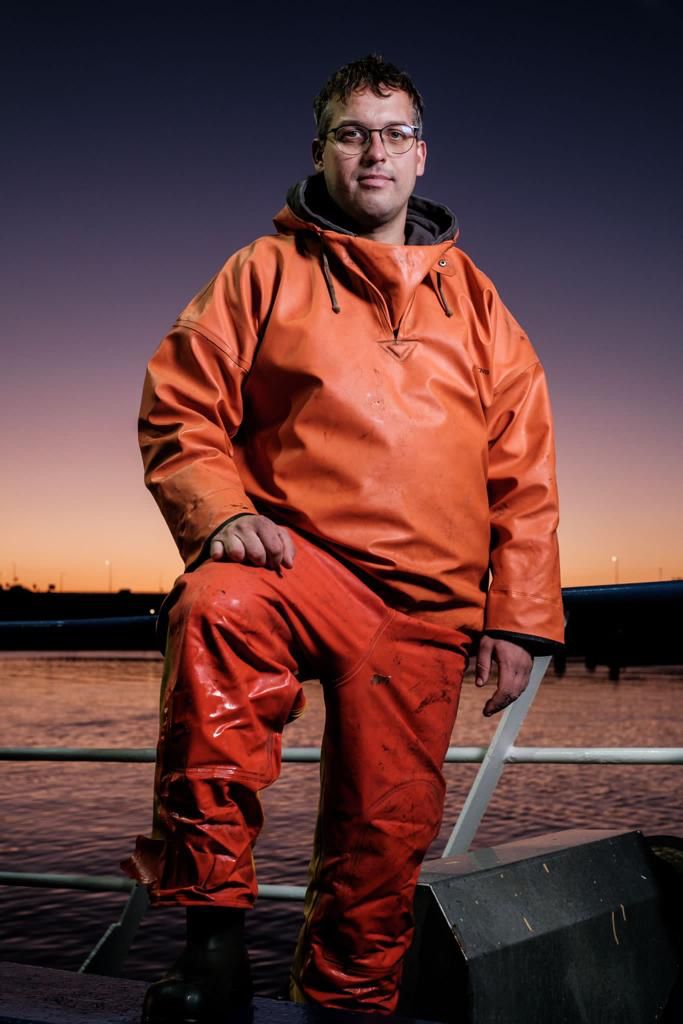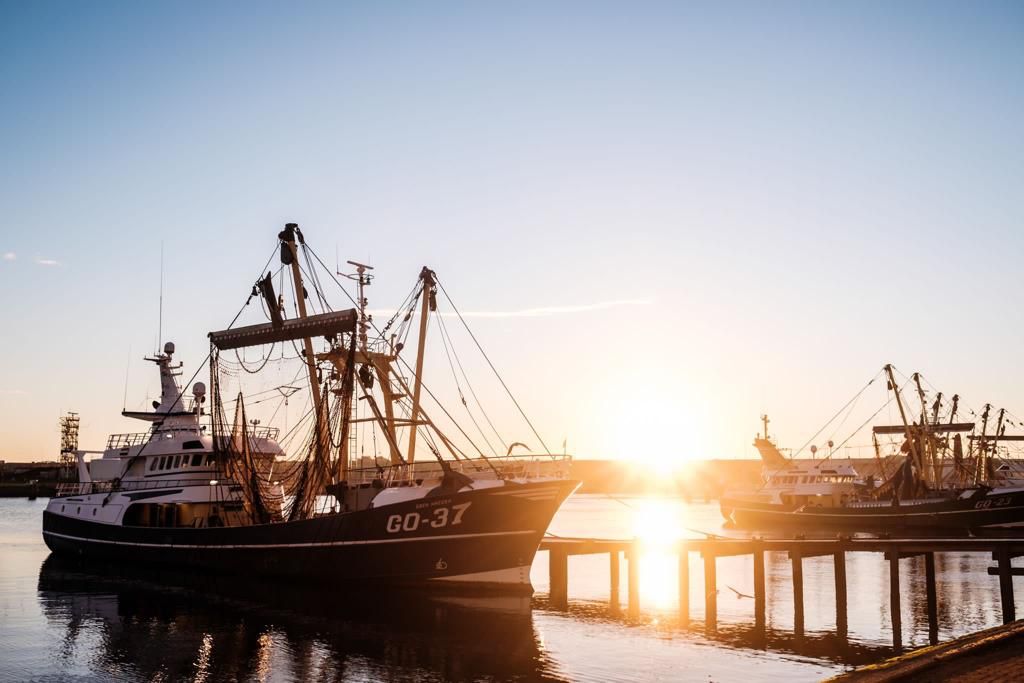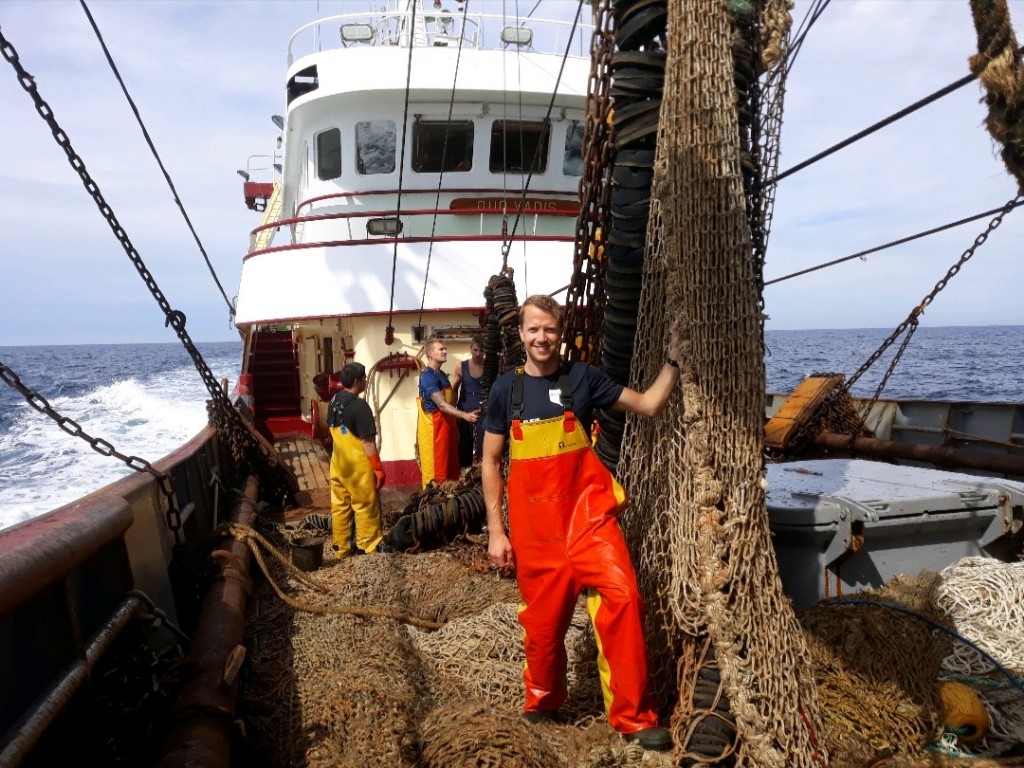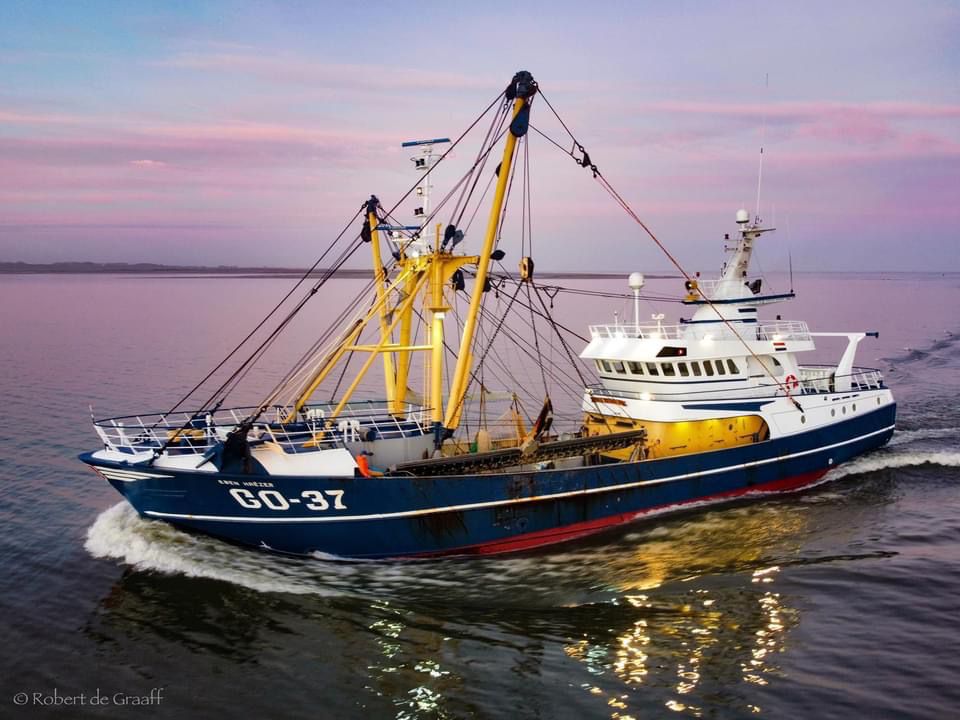Vessel GO-37, owned by fisherman Hans Tanis – Photo: Robert de Graaff
June 2nd, Karlijn Stenvers, Suzanna de Vries
Medium: De Volkskrant
The fishing industry is struggling to balance EU’s demands for sustainability and economic viability. Will fishing have a place in a greener future? Fisherman Hans Tanis expresses his fears. He has been fishing for flatfish in the North Sea for twelve years with his vessel GO-37, located in fishery town Stellendam in the Netherlands. “My cousin and I are the sixth generation running this business.”
Tanis has two young sons who already like to exclaim how they will follow in their fathers footsteps. However, when asked whether he would see his sons taking over, his answer is tinged with concern. ‘’Right now, I would prefer them to pursue another trade.’’

Fisherman Hans Tanis – Photo: Robert de Graaff
Tanis’ worries reflect the distress felt by fishers throughout Europe. The European Commission recently proposed an action plan to reduce the sectors’ impact on marine ecosystems and other initiatives implementing the Green Deal.
On the 24th and 25th of May, PECH (Committee on Fisheries) held a public hearing about the future of fisheries. After the European Commission proposed the controversial action plan, its social and economic impact on fishing activities were considered. A follow-up hearing is scheduled for the end of June. Fisherman Tanis understands that green transformation is inevitable, but he doesn’t feel supported. ‘’The EU is demanding change that cannot be met without a viable plan’’, says Tanis.
In the last fifty years, the global population has doubled, and people’s consumption of seafood has nearly doubled as well. Globally, the amount of fish stocks that are overexploited - meaning fish being caught at a faster rate than the growth of their stocks - have more than doubled since the 1980s. This poses a risk of irreversible damage to biodiversity, including the loss of species and their habitats. When fish populations decrease, other species that rely on these fish and their habitats will also be affected, putting ecosystems at risk. Despite these threats to the environment, the action taken by the EU and member states have not kept pace with the situation. The reality remains that scaling down or transforming the fishing industry will have social and economic consequences.
EU’s search for a greener future
Björn Stockhausen, green advisor for PECH, understands the urgence: “We’ve hit a wall.” He explains there is no going around the imminent need for green transition, but it seems impossible to balance with a viable transition for the fishing industry. “It’s always economy versus ecology and long-term versus short-term.”
So far, the EU has initialized several developments as an attempt for the fishing industry to go greener and restore ecosystems. Amongst them are the lowering of fishing quota, increase of wind turbine parks at sea, and an increase of marine protected areas. Ongoing discussion on policy within PECH will most likely result in more substantial measures, like a possible ban on bottom trawling in marine protected areas.
Lack of sustainable methods
Currently, there is a lack of environmentally sustainable fishery methods. A few years ago, the Netherlands experimented with the electric pulse fishing method, an alternative for the traditional beam trawl technique which involved chains stirring up the seabed. With the pulse fishing method, fish are startled by electric shocks. The fish that are buried in the sand, like the common sole, would swim up to be caught by a net above. Dutch scientists found this method to be more sustainable. Optimism for a greener future was however shattered when the EU imposed a ban on pulse fishing in 2019.

Vessel GO-37, owned by Hans Tanis – Photo: Robert de Graaff
Dr. Nathalie Steins, former head of Wageningen Marine Research, is one of the Dutch scientists who showed how the pulse fishing technique could have been a solution for a greener future. ‘’The technique minimized the seafloor disturbance. The bycatch went down by 80% and there were lower CO2 emissions.’’ The lower CO2 commissions are connected to the reduction of fuel use. Dr. Pim Boute, researcher on the pulse fishing technique and its effects on marine organisms, explains: ‘’The pulse fishing method reduces fuel consumption by half compared to the traditional beam trawling method.’’
The significant number of Dutch vessels able to use the technique became the last straw for friction between France and the Netherlands. While the Dutch scientist had presented a scientific report showing the sustainability of pulse fishing, the method was questioned by the French NGO BLOOM. The vote on the pulse technique was taken to the European Parliament and fell against after intense political bickering between the Netherlands and France. Scientists across Europe continue to argue for pulse fishing as a viable solution.
According to Steins, there is no new quick solution for a greener future. “It took twenty years to develop the pulse fishing technique.’’
Catch 22
Boute explains several factors that contribute to fishers’ concerns about their future. Beginning with the Russian invasion of Ukraine caused fuel prices to skyrocket, and Brexit still plays its part. “In addition, an increase of fishing ground is lost by offshore wind turbines, marine protected areas, and sea ways for military purposes and transport.’’
According to Steins, the industry is in a ‘catch 22’. ‘’The biggest challenge right now is that fishermen are not doing well financially. With low revenues you aren’t going to invest in new innovations.’’ Fisherman Tanis agrees. “We are very conscious about the environment, but a viable business is essential for working towards a green transition.”
Despite the challenges, Geert Hoekstra, economic researcher within Seafood, Fisheries and Aquaculture, maintains a positive outlook on the future. ‘’There are ideas for innovations, but they are still in their starting phase.’’ According to him, it is essential to get the time and space to experiment with innovations. “You can’t have constantly changing legislation. For fishermen, it’s now like a football game, but the rules of the game keep changing.’’
The search for new innovations does not go without any support. Member states are directed to subsidize green transition. In the Netherlands, a total of 444 million euros was made available to make the North Sea fisheries become economically profitable again. In addition, fundswill be made available for innovations for sustainable fishing and shared use of offshore wind turbine parks. ‘’The Ministry works closely together with the fisheries sector’’, says a spokesperson from the the Ministry of Agriculture, Nature and Food Quality.
A need for cooperation
It appears that in order to go forward and overcome numerous challenges, the fishing industry has to unite, with the EU providing a clear direction and support. ‘’The combination of environmental, economic and political factors has put the industry in a difficult position’’, explains Hoekstra. Tanis adds: ‘’A lot of fishing companies are now in survival mode.’’
Boute gives an example discussing how better communication could have influenced the outcome of pulse fishing: “There were information requests from the French and Belgians at the time that we had to show the process. The Dutch government did not respond to these requests. I then understand the developed friction. Somehow everyone here hasn’t done it the way it should be done.’’ Hoekstra agrees that with cooperation between member states, stable support and new innovations there still is hope for a future for fisheries.

Geert Hoekstra – Photo: WUR
However, Hoekstra also thinks the future might just be very different. He explains that the industry will continue to shrink, and the challenges to fishing activities will continue to affect prices. ‘’The price of sole fish was averaging around seven euros per kilo. Now, the average price is thirteen to fifteen euros per kilo.’’
Without change, price trends will continue to get worse. ‘’If this trend continues without any new viable innovations, then fishing will become an elite industry’’, says Hoekstra. “North Sea fish will only be accessible to a small group of individuals in Europe. It’s a grim situation. However, on the other hand, as they say, ‘never waste a good crisis.’’
Video: Hans Tanis
This article is part of “Crossborder Journalism Campus”, an Erasmus+ project of the University of Gothenburg, Leipzig University and Centre de Formation des Journalistes in Paris. Additional reporting: Greta Hey, Valentine Daléas, Camille Gaborieau, Laura Naumann, Jonah Papendorf.
The original article is written in Dutch – this is a translated version.

